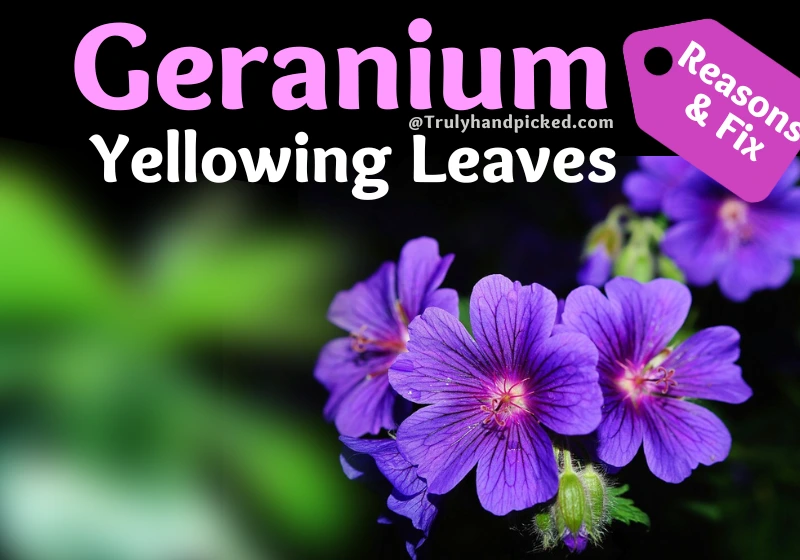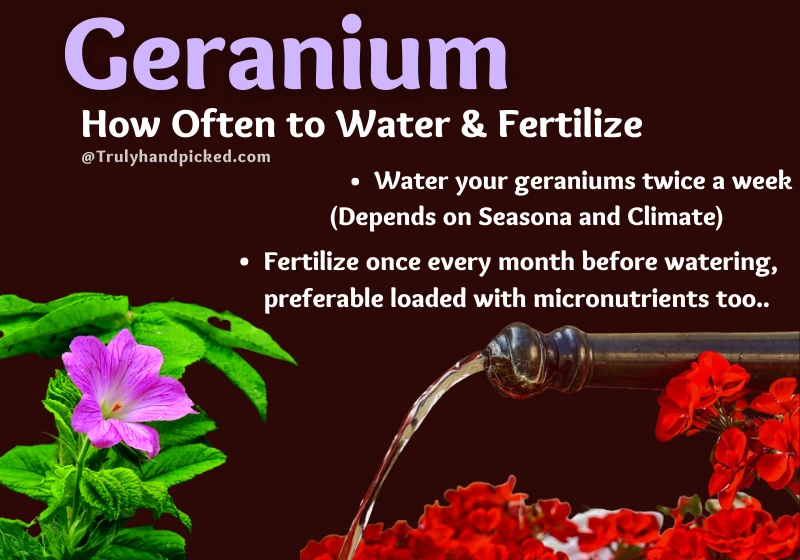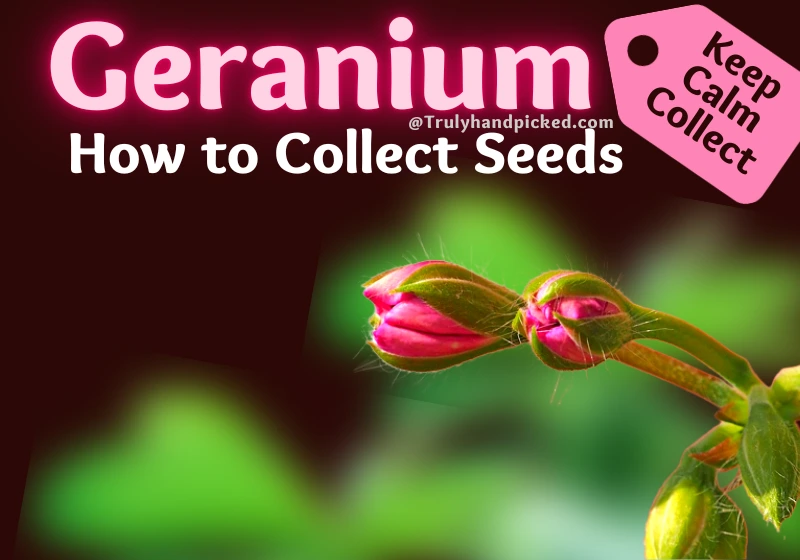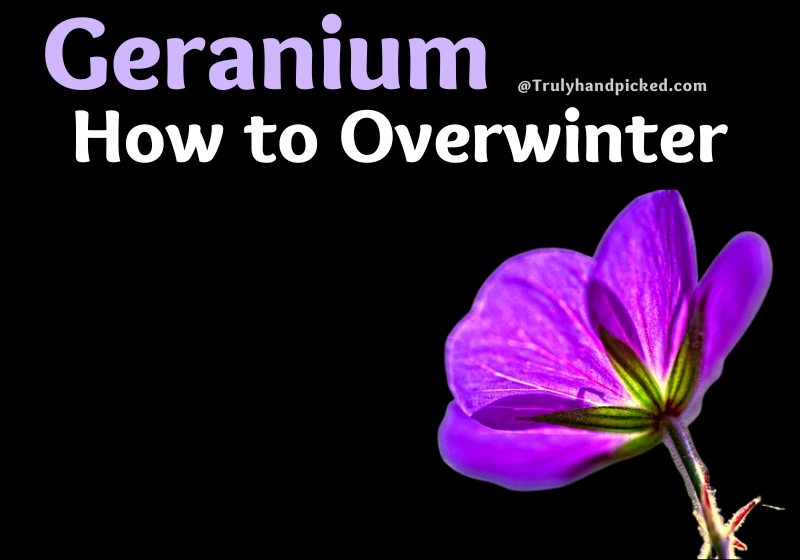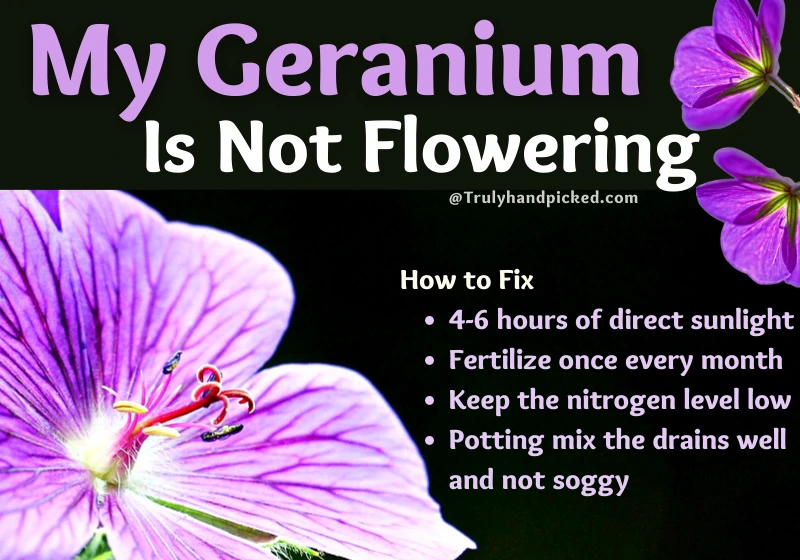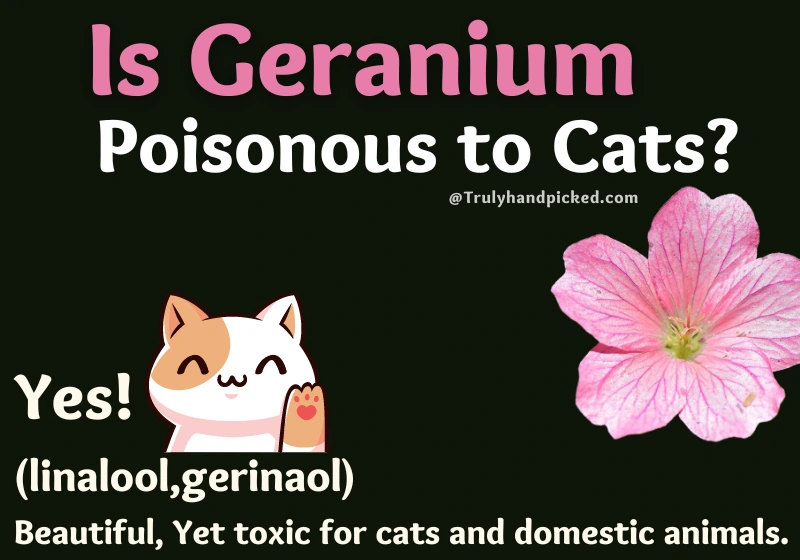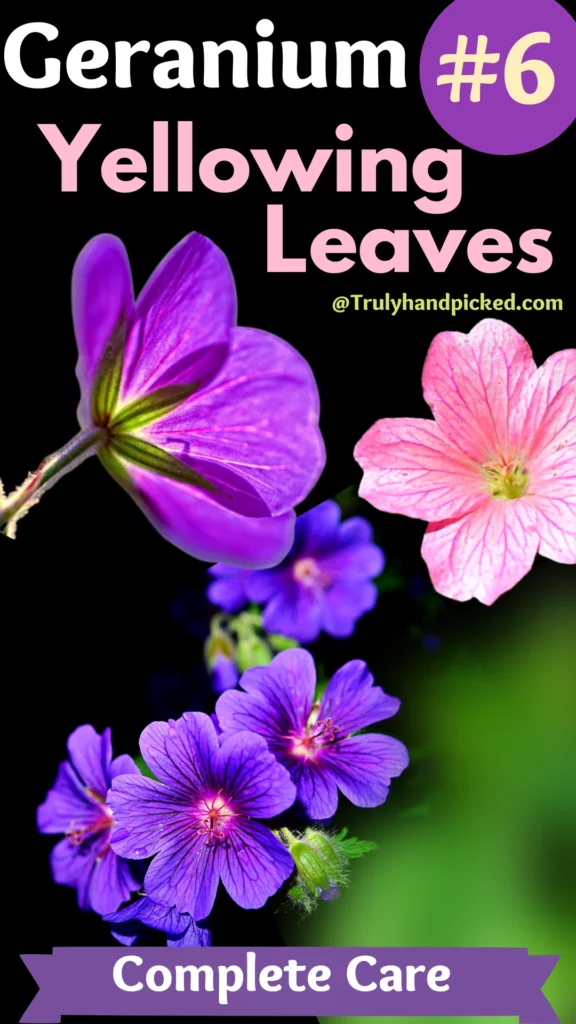Geraniums also called crane’s-bill are beautiful flowering plants that add a dash of color to your garden. It is highly appreciated for its vivacious blossoms and nice fragrance. Due to its high scent, this plant works as a natural repellent for pests or bugs.
You can grow them easily in an open yard or a restricted pot, depending on your suitability. It thrives effortlessly in rich and well-drained potting soil with the help of a few fundamental growing essentials.
Besides these basic growing needs, you have to take care of some other problematic sides of geranium to get a handful of harvest at the end. Here we come up with some of those facts-
Why My Geranium Leaves Are Turning Yellow?
A geranium plant looks ravishing when boomed with pretty pom-pom-like flowers around green foliage. But this beautiful display gets sometimes interrupted when the greenness of the leaves is gone. Yellow leaves are one of the most typical troubleshoot of a growing geranium plant. If you also find that the leaves of your geranium plant are turning yellow, be attentive in time.
Reasons
- Unwanted moisture due to overwatering
- Improper climate due to sudden cold snaps
- Inadequate nutrition for irregular fertilization
- Untreated fungal issues like verticillium fungal infection
- And dehydration due to lack of watering
Fix Yellowing Leaves
How often to water and prevent overwatering: Water your geraniums twice a week, but the rule can change with regard to the season, climate, and growth of your plant. The second rule is to check if the soil’s top 2inch surface is dry before hydrating your plant again.
How often to fertilize: Lack of macro and micronutrients could drive your plant leaves could turn yellow. Fertilize once every month before watering and go for slow release or liquid fertilizer preferably it is loaded with micronutrients. Moreover, fertilizers are not just to prevent yellowing leaves it also helps you plant with bigger leaves and better produce.
Epsom salt for Geranium for nitrogen boost: Using a pinch of Epsom salt on your containers or around the plant before watering can increase the chlorophyll levels and give your geraniums a lush green appearance. The leaf once turned yellow cant be reversed to green but, you can prevent future yellowing of leaves.
Why Are My Geraniums Dying?
These perennial annual flowering plants like geranium may be easy to grow, but they are quite particular about their thriving requirements. Once you stop providing them with proper growing essentials, they will start wilting or dying eventually.
Once you find that your home geranium is suffering from the same issue, be sure that there must be some untreated issues that work behind this problem. Some common causes of a dying geranium plant, are-
- Bacterial leaf disease
- Infestation of geranium budworm
- Overwatering or too much moist
- Mildew buildup into the growing medium
- And unhealthy roots or unpruned infected stems or leaves.
How to Collect Geranium Seeds?
The best quality of this plant is that you can grow this plant from seeds and even collect those seeds from your home plant easily at home. You don’t need to spend any extra money to purchase geranium seeds from the market.
Geranium has almost 400 different species and all of them can be germinated from seeds directly. Besides, you can grow your selected species exactly the way it grows before when you cultivate them directly through their true seeds. Here we come up with a clear method of how to collect the seeds of a geranium plant rightfully with these step-by-step instructions-
- Try to know the exact timing first, as the timing of ripping pod you need to collect them
- Make sure you have enough patience to let them ripe enough before going for the seeds
- Seeds of the geranium plant are extremely light and can blow away with the slightest breeze
- Wait till the end of the flowering season to allow the pods to produce enough seeds
- Once the flowers dry out entirely, they will form seeds pods inside
- Let the pods ripe properly, that’s when the seeds will arbalest properly
- Put a mesh bag over the ripped flowers to catch the seeds perfectly
- Once you get the bag full of seeds take it away and start your process of germination
Propagate Geranium From Cuttings in Water?
You can propagate geranium plants easily even in water following some smart propagation tips. Here is a clear guide to this process below-
- Find a healthy stem from your parent plant first and cut it out with a disinfected cutter
- Make sure the cutting is 6-7 inches long with 6-8 healthy leaves on it
- Remove all the leaves from the bottom part and put the cutting in a glass of water
- You should use distilled water here and let the end of the cutting steep into the water well
- Place the glass in a place where it can get bright but indirect sunlight in a warm climate
- Keep it regrow there for a couple of weeks and change the water once in a week mindfully
- After a certain period, the cutting will produce roots from the end part
- Wait till the root grows about 3-4 inches and then, replant it according to your choice.
How to Overwinter Geranium (Cranesbill)?
Despite being an easy-to-grow plant, a geranium plant must be saved from the grasp of freezing winter to act as an annual plant. If you are growing it as a houseplant, no need for extra care, besides keeping the plant away from cold drafts.
But, if you are growing a bunch of geranium plants in your outdoor yard, you must take a few initiatives to overwinter them. Here are some quick tips you should follow in this regard-
- Dig out the plants from the soil and clean the roots a bit with a dry wiper
- Store those plants in a shady place the whole freezing season until the spring come
- To store them properly, bring a large cardboard box and place them separately inside
- Close the top carefully and provide some essentials to improve their survival efficiently
- Place the box in a cool and dry location with a mild warm climate of about 50-60 degrees F
- Try misting the stems with a sprayer infrequently, once you find they start turning dry
- And cut off or dispose of any unhealthy or crispy or infected stems or leaves from the stored plants, once you detect them.
Once the winter passes, you just need to replant again and provide basic growing needs accordingly to let them thrive again.
Why Are My Geraniums Not Blooming?
Geranium plants usually bloom quickly and don’t claim much to produce flowers. However, they sometimes show stunt growth or not-flowering problem due to some unsolved issues or inadequate availability. The common causes of not-blooming of your growing geranium plants are–
- Insufficient light that is less than 6 hours of full sun
- Overfertilization or frequent fertilization than the plant needs
- Using high-nitrogen fertilizer
- And damp or soggy soil for overwatering
Fix
To avoid getting this crisis and boost the blooming quality of your geranium plant, try to follow these rules attentively-
- Place your planter in a warm climate, where it can get 4-6 hours of direct sunlight
- Fertilize your plant with any liquid diluted fertilizer in 3-5 weeks gaps
- Keep the nitrogen level in your fertilizer low than potassium and phosphorous content
- And make sure you use a well-drained growing medium, every time you grow a geranium plant at home.
Is Geranium Poisonous to Cats?
Like most of the high fragrant flowering plants, geranium is mildly poisonous to your house pets, including cats and dogs.
Geranium plants contain two insignificant toxic elements, which are-
- Linalool
- And geraniol
But you shouldn’t forget that the geranium plant could provide any harm by just contacting your pets. These two substances may provide some moderate health issues to your house pets when they ingest a bit of this plant unknowingly. Some clear signs of your cat or dog may have poisonous effects of geranium, are-
- Skin irritation
- Itchy mouth
- Vomiting
- Anorexia
- And sometimes depression
Remember that these symptoms only happen, when your pet chews or ingests some portions of a geranium plant directly. Once you find these signs out, apply any of these methods immediately–
- Try to bring your cat or dog to the nearest veterinarian’s hospital as soon as possible
- Attempt to give your pets some homely medical support instantly
- And try to encourage your pet to vomit, as this will take the poisonous geranium part out of their stomach at once
You should not worry much in such cases though, as ingestion may arouse a few mild health issues, but it can’t do any serious concern to your pet ever. However, try to keep the plant a bit away from the reach of your cats or dog to avoid such mishaps again.
